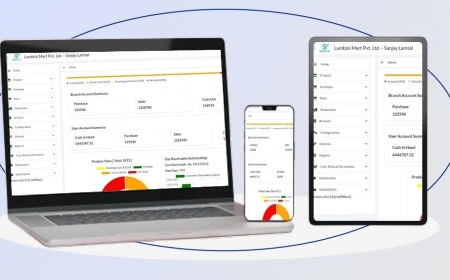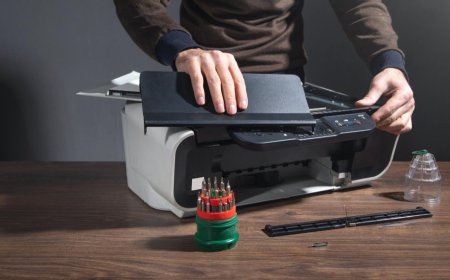The Importance of a Filing Cabinet Lock for Office and Home Security
In todays fast-paced digital world, physical document storage still holds significant value for many businesses and individuals. From contracts and financial records to medical files and legal documents, keeping sensitive paperwork secure is critical. This is where a filing cabinet lock becomes not just a convenience but a necessity. Many assume that documents stored in a cabinet are inherently safe, but without the right locking mechanism, they're vulnerable to prying eyes, theft, or even tampering. Whether in an office, home workspace, school, or healthcare setting, the role of a robust filing cabinet lock cannot be overstated. This blog explores why locking mechanisms matter, the types available, and how to choose the best one for your needs.
What is a Filing Cabinet Lock and Why is it Essential?
A filing cabinet lock is a security feature designed to restrict access to the contents of a filing cabinet. Its typically integrated into the top drawer and may control the locking mechanism for all drawers, depending on the cabinets design. For both private users and businesses, a lock serves multiple purposes: it ensures confidentiality, prevents unauthorized access, and deters theft. In environments such as law firms, accounting offices, and medical practices, legal and ethical obligations often require locking cabinets that store sensitive data. Even in home offices, safeguarding personal documents like bank statements, insurance papers, and identification records is just as important. Without proper locking systems, these materials are at risk of exposure.
Types of Filing Cabinet Locks to Consider
There are several different types of filing cabinet locks, each catering to varying levels of security and convenience. The most common type is the cam lock, which uses a rotating metal piece that secures the drawer when turned with a key. Cam locks are simple, affordable, and widely used, but they offer limited resistance to picking or forceful entry. Then theres the plunger lock, which locks automatically when the drawer is pushed shutideal for high-traffic workplaces where users may forget to relock cabinets manually. For enhanced security, electronic or digital locks are becoming popular. These often use a keypad or RFID card for access and can even be integrated into access control systems for added convenience. Tubular locks are also used in higher-security models, featuring a round key that is harder to duplicate. Understanding the pros and cons of each type can help users select the right option for their environment.
Choosing the Right Filing Cabinet Lock for Your Space
When selecting a filing cabinet lock, several factors should guide your decision. First, consider the sensitivity of the documents you plan to store. If your files include client contracts, financial information, or personal data, its wise to invest in a higher-grade lock like a tubular or digital model. Second, assess usage frequency. In a busy office with multiple users, a digital keypad may be more efficient and secure than managing a bunch of physical keys. Third, think about budget and ease of installation. While cam locks are budget-friendly and easy to install, they may not be suitable for environments that demand strict confidentiality. Additionally, always check if the lock mechanism is compatible with your existing cabinet model. Some cabinets are built to accommodate only certain lock types or brands. Doing a bit of research beforehand ensures smooth installation and optimal security.
Maintaining and Replacing Filing Cabinet Locks
Like any mechanical or electronic component, a filing cabinet lock requires periodic maintenance to function effectively. Dust, rust, and frequent use can deteriorate the locks performance over time. A good practice is to lubricate mechanical locks with graphite or silicone-based products every few months to prevent jamming. For digital locks, regularly check batteries and perform firmware updates if applicable. If a lock starts sticking, the key doesnt turn smoothly, or if there are signs of tampering, it might be time for a replacement. Replacing a filing cabinet lock is usually straightforward, especially for cam or tubular locksmost can be swapped out with minimal tools. Keeping a spare set of keys or access codes documented and stored securely can prevent being locked out unexpectedly. Regular inspections also ensure you catch potential issues before they lead to breaches in security.
Filing Cabinet Lock Solutions for Different Industries
Different industries have unique document security requirements, and a well-chosen filing cabinet lock can make all the difference. In the healthcare sector, compliance with data privacy laws like HIPAA necessitates secure storage of patient records, often demanding high-security locking systems. Legal firms are similarly bound to protect client confidentiality, making digital or multi-drawer locking mechanisms the best choice. In the education sector, student records, examination materials, and staff documents must be kept under lock and key, while still allowing administrative staff controlled access. Even in creative industries, original content, designs, and contracts often require protection from theft or misuse. Retail and logistics businesses may need to store transaction logs or employee files, and in these fast-moving environments, a lock with easy access yet robust security is invaluable. Regardless of the sector, filing cabinets with dependable locks are an essential element of infrastructure.
Upgrading Security: When to Invest in Smart Locks
Traditional filing cabinet locks serve their purpose well, but with the evolution of smart office solutions, many organizations are opting for digital upgrades. Smart locks not only provide enhanced security but also offer usage logs, access control, and remote monitoring. For instance, an office manager can track who accessed the cabinet and when, or even revoke access without physically retrieving a key. This is particularly useful in hybrid workplaces where multiple users may need limited or time-based access to certain files. Smart filing cabinet locks can be programmed with PIN codes, biometrics, or app-controlled systems, ensuring a level of control and customization far beyond standard keyed locks. While the initial investment is higher, the long-term benefits in convenience, security, and compliance make smart locks a forward-thinking choice.
Conclusion
In an era where both physical and digital security are paramount, the humble filing cabinet lock plays a vital role in safeguarding sensitive information. Whether you're managing business records, legal documents, or personal files, ensuring these materials are securely stored is a responsibility that cannot be ignored. With options ranging from basic cam locks to advanced smart locks, theres a solution for every security need and budget. Choosing the right locking mechanism, maintaining it regularly, and upgrading when necessary can significantly reduce the risk of data breaches and unauthorized access. One name that stands out in providing reliable cabinet security solutions is Filing cabinets, offering a range of quality products that combine function, durability, and peace of mind for users across all sectors.





























